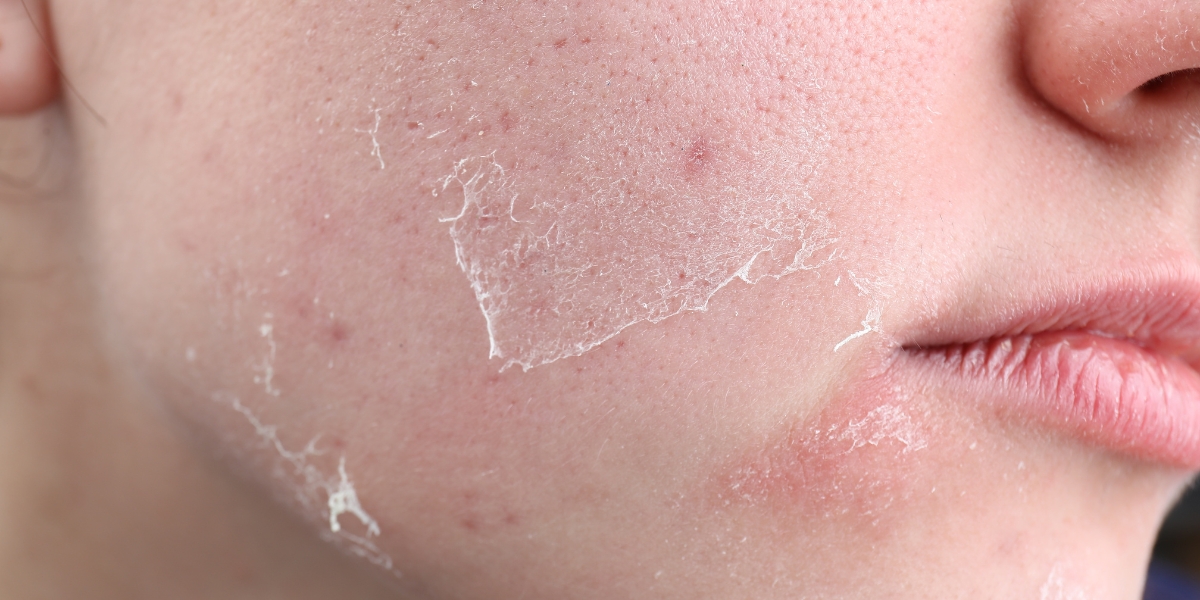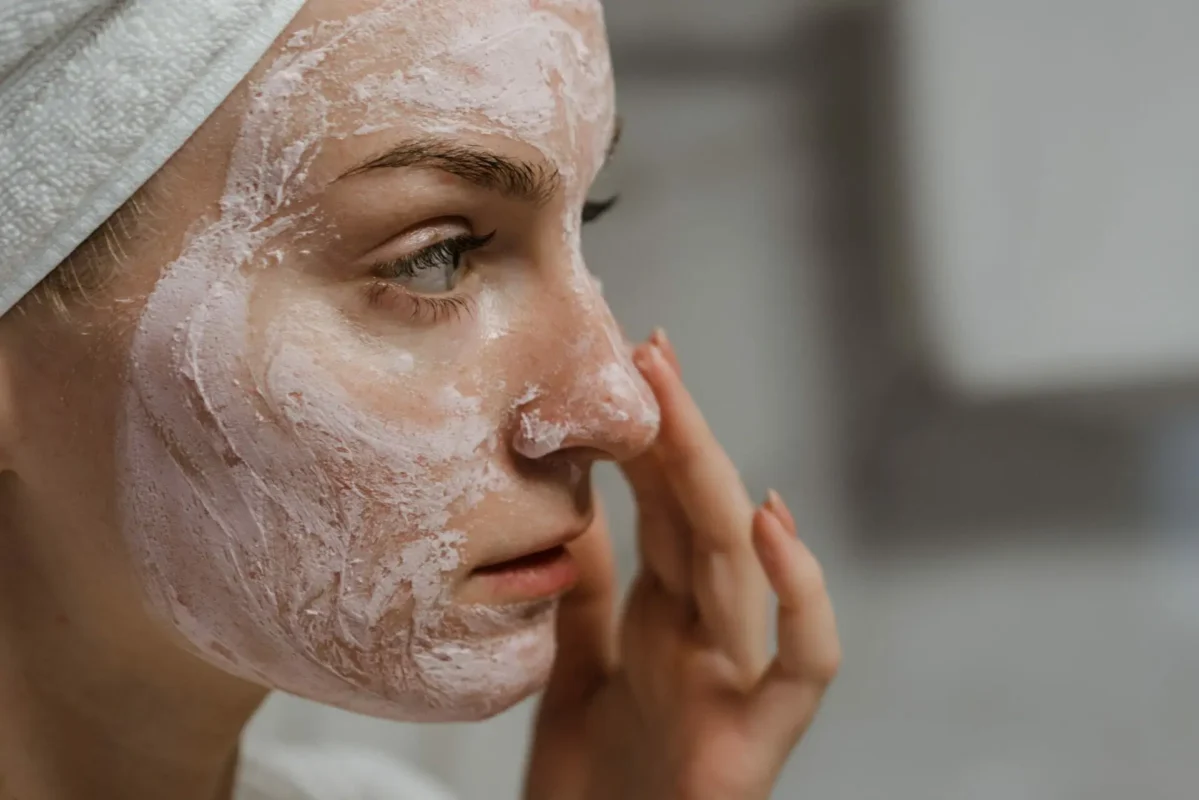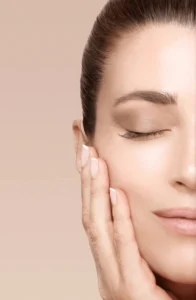Dry skin can be frustrating and uncomfortable. Whether it’s due to environmental factors, genetics, or lifestyle choices, experiencing dry skin is something many people face at one point or another. If left unchecked, dry skin can lead to irritation, sensitivity, and even skin conditions like eczema or dermatitis. Fortunately, with the right knowledge and approach, dry skin can be managed, soothed, and restored to its natural, healthy state.
In this comprehensive guide, we’ll dive deep into understanding dry skin, its causes, symptoms, and effective skincare routines that will leave your skin feeling hydrated, nourished, and revitalized.
What Is Dry Skin?
Dry skin, or xerosis, occurs when your skin loses its ability to retain moisture, leaving it feeling rough, tight, and often flaky. This lack of moisture may occur in any part of your body, but it’s especially noticeable on the face, hands, and legs. The skin’s outermost layer, the stratum corneum, contains lipids that help lock moisture in and prevent dehydration. When these lipids are depleted or impaired, moisture escapes, leading to dryness.
Read in-depth article on “Simple Skincare Routin For Dry Skin “
Common Causes of Dry Skin
- Environmental Factors
- Cold Weather: During the colder months, the air is often drier, and we tend to use indoor heating, both of which can strip the skin of moisture.
- Low Humidity: The lower the humidity, the more moisture the skin will lose to the environment. Dry climates and winter months can exacerbate this condition.
- Sun Exposure: Long-term sun exposure can damage the skin’s moisture barrier, leading to dehydration and dryness.
- Air Conditioning: While providing relief from heat, air conditioning also removes moisture from the air, contributing to dry skin.
- Hot Showers and Baths
Prolonged exposure to hot water can damage the skin’s protective barrier, resulting in moisture loss. - Harsh Skin Care Products
Certain skincare products that contain alcohol, fragrances, and sulfates can strip the skin of its natural oils. Over-exfoliation can also damage the skin’s outer layer and cause excessive dryness. - Aging
As we age, the skin naturally loses its ability to produce oil and retain moisture. This makes older adults more prone to dry skin. - Underlying Health Conditions
Some conditions, such as eczema, psoriasis, and hypothyroidism, can lead to chronically dry skin. People with atopic dermatitis or other skin disorders are particularly susceptible to dryness. - Dehydration
Not drinking enough water can affect your skin’s hydration levels, making it appear dull, flaky, and dry.

Symptoms of Dry Skin
Dry skin can manifest in various ways, and the symptoms can range from mild to severe:
- Flakiness or Peeling: Skin may appear scaly, flaky, or cracked.
- Itching: Dry skin often triggers an itchy sensation, and scratching can lead to further irritation or even skin damage.
- Tightness: A feeling of tightness, especially after washing, is a common sign of dryness.
- Redness or Inflammation: In more severe cases, dry skin can become inflamed, leading to redness, irritation, or rashes.
- Cracks or Fissures: Severe dryness can lead to painful cracks in the skin, especially on the hands, feet, and around joints.
How to Care for Dry Skin
Managing dry skin requires a thoughtful approach that involves both hydration and nourishment. The goal is to repair the skin’s moisture barrier and lock in hydration. Here’s an effective skincare routine for dry skin:
1. Gentle Cleansing
The first step in any skincare routine is cleansing, but for dry skin, it’s important to use gentle, hydrating cleansers that won’t strip the skin of its natural oils. Avoid harsh soaps or cleansers with alcohol, sulfates, or artificial fragrances. Instead, opt for creamy or oil-based cleansers that help retain moisture.
Recommended Cleansers:
- CeraVe Hydrating Cleanser
- La Roche-Posay Toleriane Hydrating Gentle Cleanser
- Vanicream Gentle Facial Cleanser
2. Hydrating Toner
After cleansing, a hydrating toner can help balance the skin’s pH levels and add a layer of moisture. Choose toners that contain humectants like glycerin, hyaluronic acid, or aloe vera to attract and retain moisture.
Recommended Toners:
- Klairs Supple Preparation Unscented Toner
- Paula’s Choice Enriched Calming Toner
- Neutrogena Hydro Boost Water Gel Toner

3. Exfoliation (Occasional)
Exfoliating helps remove dead skin cells that can contribute to dullness and flakiness, but it must be done with caution. Over-exfoliation can damage the skin barrier and worsen dryness. For dry skin, choose gentle exfoliants with mild, non-abrasive ingredients such as lactic acid or enzyme-based exfoliators.
Recommended Exfoliants:
- Pixi Glow Tonic (contains glycolic acid)
- The Ordinary Lactic Acid 5% + HA
- Tatcha Rice Enzyme Powder (gentle exfoliant)
4. Moisturization
Moisturizing is the cornerstone of dry skin care. The goal is to trap moisture in the skin and replenish lost lipids. Look for rich, nourishing moisturizers that contain occlusives (like petroleum jelly, shea butter, or ceramides) to lock in hydration, humectants (like glycerin or hyaluronic acid) to draw moisture in, and emollients (like squalane or jojoba oil) to soften and smooth the skin. Read more about moisturization
Recommended Moisturizers:
- CeraVe Moisturizing Cream
- Neutrogena Hydro Boost Water Gel
- Vanicream Moisturizing Cream
- Dr. Jart+ Ceramidin Cream
5. Hydrating Serums
Incorporating a hydrating serum can elevate your skincare routine by delivering intense moisture deep into the skin. Look for serums containing hyaluronic acid, peptides, or antioxidants like vitamin E, which help repair the skin’s moisture barrier.
Recommended Serums:
- The Ordinary Hyaluronic Acid 2% + B5
- Vichy Mineral 89 Hyaluronic Acid Serum
- Dr. Dennis Gross C+ Collagen Brighten & Firm Vitamin C Serum
6. Sun Protection
Even though dry skin might not be as prone to sunburns as oily skin, UV radiation can still cause further dryness, premature aging, and skin damage. Always apply a broad-spectrum sunscreen with SPF 30 or higher to protect your skin from harmful UVA and UVB rays.
Recommended Sunscreens:
- EltaMD UV Daily Broad-Spectrum SPF 40
- La Roche-Posay Anthelios Melt-in Sunscreen Milk SPF 60
- Neutrogena Hydro Boost Water Gel Sunscreen SPF 50

7. Night Care: Overnight Masks and Oils
Nighttime is the best time for the skin to repair itself, so consider incorporating overnight hydrating masks or oils. These products provide intense hydration and nourishment while you sleep.
Recommended Overnight Products:
- Laneige Water Sleeping Mask
- Kiehl’s Midnight Recovery Concentrate
- Tatcha Luminous Dewy Skin Night Concentrate
8. Humidifier Use
To help combat environmental dryness, especially during winter when indoor heating is on full blast, consider using a humidifier in your home. This can help maintain moisture levels in the air, preventing your skin from becoming too dry.
9. Hydrate from Within
Hydration isn’t only external; drinking enough water throughout the day is vital for keeping your skin hydrated. Aim for at least 8 cups of water daily, and consider incorporating hydrating foods into your diet, like watermelon, cucumbers, and berries.
10. Avoid Harsh Ingredients
Some ingredients commonly found in skincare products can exacerbate dryness. These include alcohol, synthetic fragrances, and sulfates. Always opt for products that are free from harsh chemicals and opt for fragrance-free or hypoallergenic formulations.
Lifestyle Tips for Managing Dry Skin
Beyond your skincare routine, there are several lifestyle adjustments that can help keep your skin hydrated:
- Limit hot showers and baths. Stick to lukewarm water to avoid stripping natural oils.
- Wear protective clothing. In cold weather, cover your skin with scarves, gloves, and hats to protect it from the harsh elements.
- Avoid skin picking. Picking at dry patches can damage your skin, leading to further irritation and dryness.
- Incorporate omega-3 fatty acids into your diet. Omega-3s help support skin hydration and protect the skin barrier. Consider consuming foods like salmon, walnuts, and flaxseeds.
- Exercise regularly. Exercise increases blood flow and promotes healthy skin by delivering nutrients and oxygen to the skin cells.
Conclusion
Dry skin may be a common problem, but with the right approach and skincare routine, you can keep it moisturized, healthy, and glowing. Be sure to use hydrating products, avoid environmental stressors, and adopt habits that nurture your skin both from the inside out and topically. By giving your skin the care it deserves, you’ll not only alleviate discomfort but also promote long-term skin health and radiance.
Remember, consistency is key when it comes to managing dry skin. Be patient, stick to a nourishing routine, and soon enough, your skin will thank you with softness and smoothness that radiates from within.













2 thoughts on “Skincare Routine for Dry Skin: Comprehensive Guide to Revitalize and Nourish Your Skin”